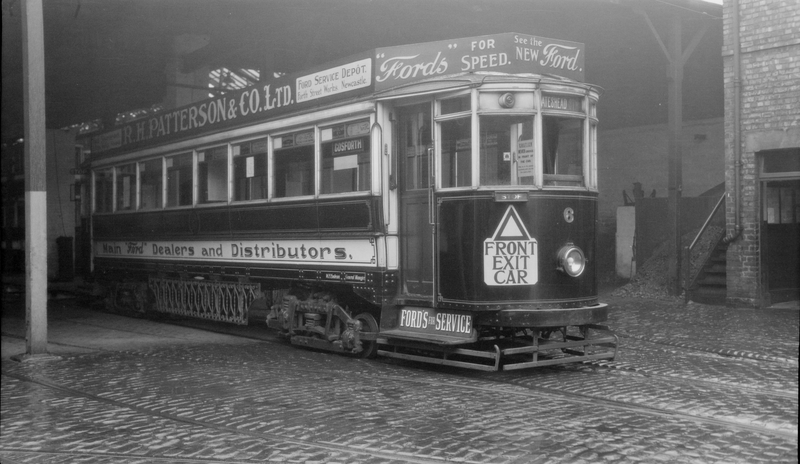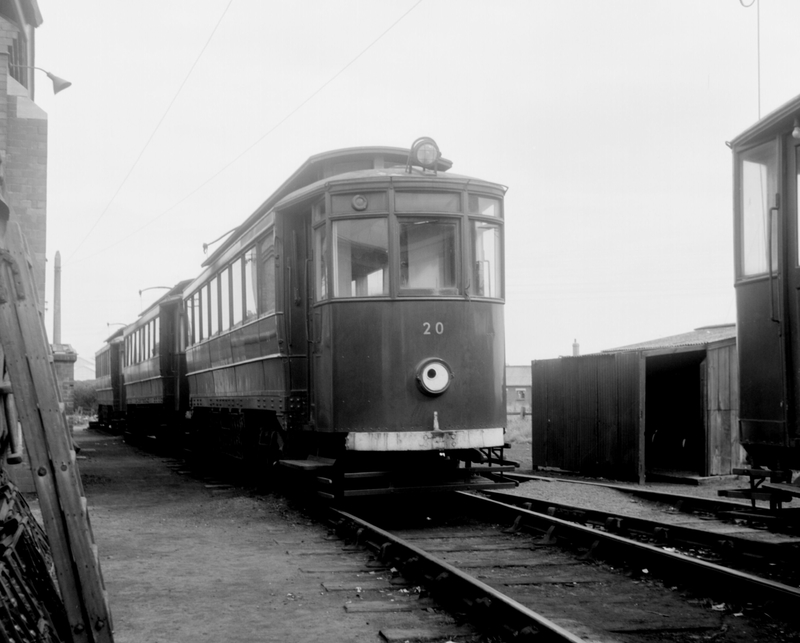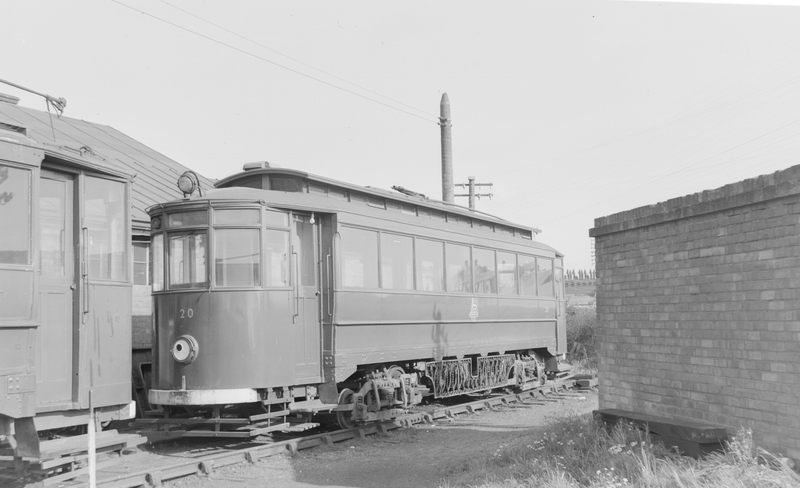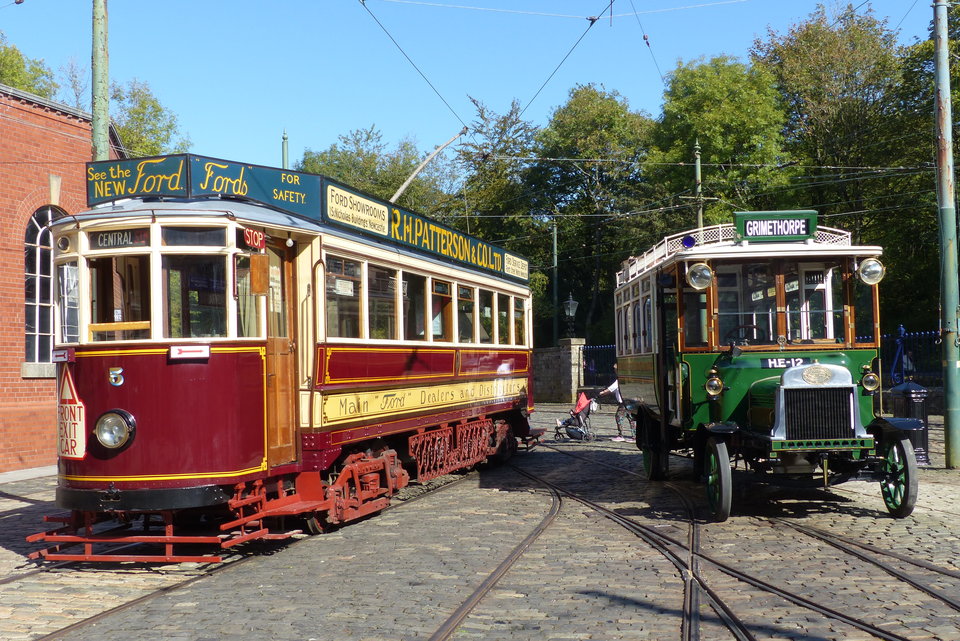Gateshead & District Tramways Co. No. 5
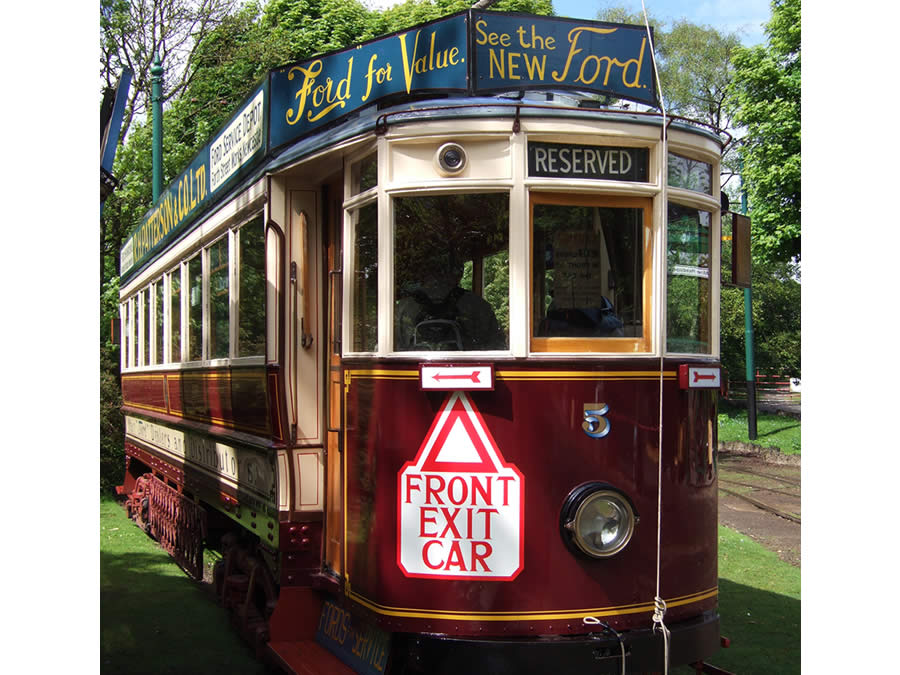
Photo: Jim Dignan
Most of Britain’s first generation tramways were municipally owned and operated, but Gateshead & District Tramways was an exception. It was a subsidiary of British Electric Traction Company, which for many years was the largest privately-owned tramway conglomerate in the country, operating upwards of 40 separate tramway systems throughout the United Kingdom and also abroad.
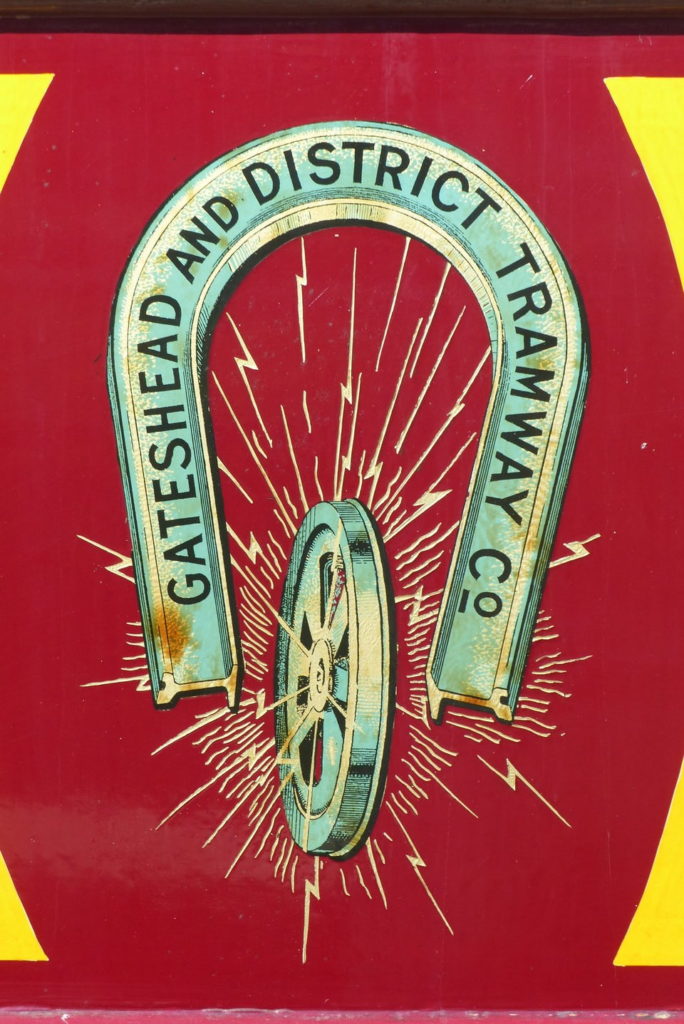
The distinctive ‘magnet and wheel’ emblem signifies that Gateshead & District Tramway Co. was a member of the British Electric Traction Group. Photo: Jim Dignan
Gateshead & District was an innovative tramway that pioneered many ideas and experiments over the years. The system itself was electrified in 1901 but faced a challenge in that a number of routes serving densely populated areas were unsuitable for double deckers because of the need to negotiate a low bridge near Gateshead station at the nub of the network. The solution they resorted to involved the use of extra long bogie-mounted single deckers with far greater standing capacity than seated.
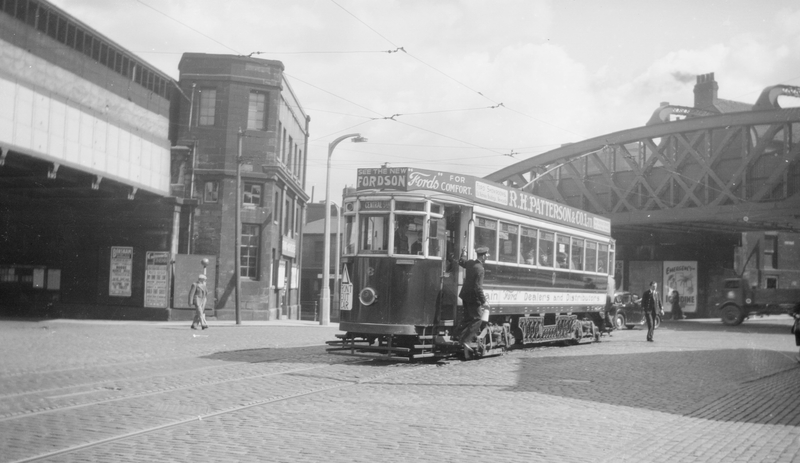
Sister car Gateshead 6 outside Gateshead station. I A Yearsley, 9/8/1949
The first tramcars for the system were purchased from established manufacturers but when Gateshead & District Tramway Co. decided to modernise its fleet between 1923 and 1928 most of the new single deckers were built in-house at its Sunderland Road works.
Gateshead 5 was one of these. Built in 1927, it provided longitudinal seating capacity for 48 and strap-hangers for 40 standing passengers, though as many as 70 standees were known to have been carried. The saloon incorporated separate smokers’ and non-smokers’ compartments with a centre partition. An unusual feature was the use of reversed maximum traction bogies in which the smaller pony wheels face outwards
Specification
- Type of tram
- Electric passenger tram – single deck; bogie mounted vestibuled front exit tramcar.
- Livery
- Crimson and cream
- Seating capacity
- 48; plus strap-hangers for 40 standing passengers, though many more (up to 70) were often carried.
- Date built
- 1927
- Date entered service
- April 1927
- Manufacturer of body
- Gateshead & District Tramways
- Manufacturer of truck
- Reversed Brill 39E maximum traction bogies
- Gauge
- 4’ 8½”
- Motor
- 2x 50 hp DK 31A
- Controller
- DK DB1 K3
- Current collector
- Trolley
- Modification
Modification of headlamps and fitting of masks during World War 2. Repainting and removal of advertising roof boards in 1950. Removal of destination boards and ornate brass fittings in 1951 on change of ownership and installation of block board bulkheads with sliding centre door plus repainting in Grimsby & Immingham green livery and renumbering as 20. Roof mounted headlamps were also added, together with saloon heaters and the maple ceiling panels were replaced with painted plywood. The tramcar also parted company with its original bogies at this point.
- Withdrawn from service
August 1951 in Gateshead;
1 July 1961 on the Grimsby & Immingham line- Subsequent history
Bought by British Railways for use on the Grimsby & Immingham line.
- Restoration history
Acquired by Tramway Museum Society and brought to Crich in 1963. Restored to Gateshead condition and livery between 1965 and 1973.
- Current status
- Restored; operational but out of commission at the present time.
- Date started operating at Crich
- 1966 - used intermittently for 23 years, most recently in 2007
- Total mileage covered at Crich
- 13,744
- Current location
- Great Exhibition Hall
- 1927 – 1951Fully operational on original tramway
- 1951 – 1961Fully operational on a different tramway
- 1961 – 1964In storage
- 1964 – 1966Used to house banks of batteries to provide power for trams at Crich
- 1966 – 2007Undergoing restoration but also intermittently in service at Crich
- 2007 –Awaiting refurbishment before returning to service

